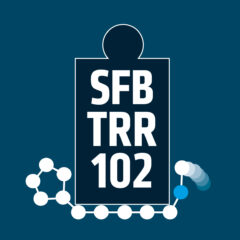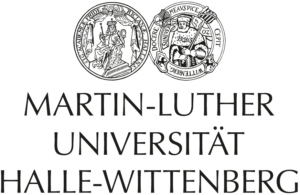Rotor-Synchronized 1H-irradiated Solid State MAS R1ρ NMR – Studying Intermediate Molecular Motions
by Hannes Jurack
and
Main-Chain Enediyne Polymer: Synthesis and Bergman cyclization
by Yue Cai
Location: zoom
Time: 15.20 – 17.00
Chair: Malte Neudorf
Rotor-Synchronized 1H-irradiated Solid State MAS R1ρ NMR – Studying Intermediate Molecular Motions
Hannes Jurack
Studying molecular motions of proteins can yield information about how they perform their functions in biological systems. R1ρ NMR experiments can access motional timescales from s to ms if the underlying process manifests in a spatially time-dependent chemical environment of the observed nuclei. To the contrary, molecular motions with time-independent chemical shifts can be observed by utilizing near-rotary resonance solid state MAS R1ρ NMR experiments. Unfortunately, the window of motional timescales from approximately 50s to 5ms is currently inaccessible via solid state NMR techniques.
Rotor-synchronized 1H-irradiated solid state MAS 13C/15N R1ρ NMR experiments enable studying motions in the aforementioned gap of timescales. The 13C or 15N spin lock and a discontinous 1H heteronuclear decoupling pulse train are applied simultaneously. By using numerical density matrix simulations, we discovered an 1H elective decoupling frequency R1ρ dispersion which depends on the motional timescale of the process. Variations of experimental and motional parameters have been studied to verify the range of validity of the modified pulse sequence. Experiments show qualitative correlation to simulated data for diluted spin pair ensembles and hint to the accessibility of motional parameters for deuterated solid biopolymers.
Main-Chain Enediyne Polymer: Synthesis and Bergman cyclization
Yue Cai
Ever since the first report of Bergman Cyclization as the intramolecular cyclization of enediyne in 1972 and initial reports of the enediyne anticancer antibiotics in the late 1980s, considerable efforts have been devoted to corresponding chemistry, biology, and potential medical applications. Not only the distance (r) between the bonding acetylenes, strain release in the transition state also predicts the relative rates of cycloaromatization. According to the known related research, enediynes, the central structure, always act as the single polymeric precursor, which need to be triggered to afford polymer chains based on aromatic unit. Considering the significant diradical properties contained in enediynes, we supposed whether it is possible to embed the enediynes structures into the repeating parts of specific polymers, thus affording repeating diradical units. Owing to the repeating valuable parts, the more prominent anticancer or other biomedical applications could be possibly reached.




